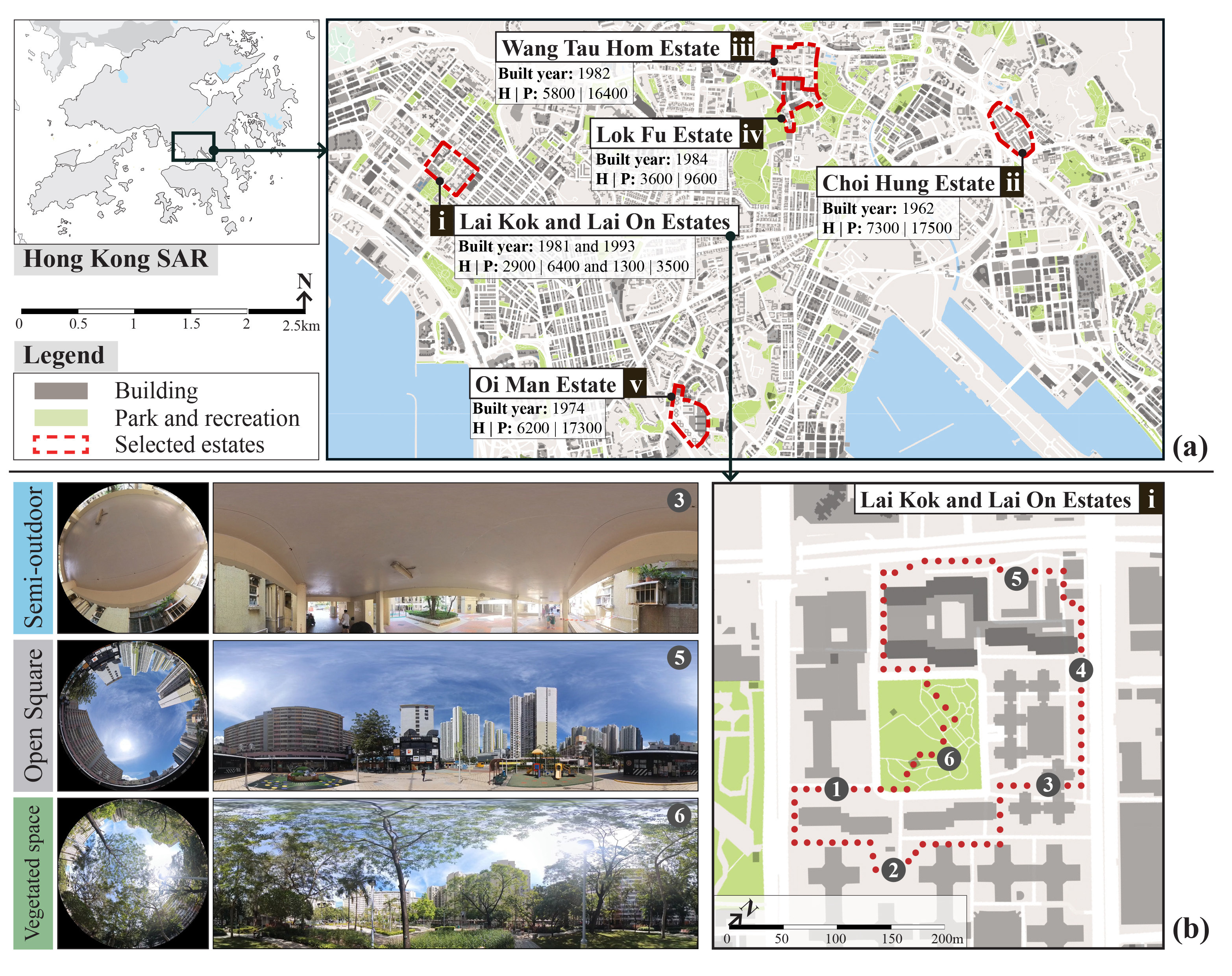Diversity of summertime thermal and environmental perceptions in residential public spaces: A walking-based assessment in Hong Kong’s Public Housing Estates
Published in Building and Environment, 2025
Recommended citation: Li, Y., Li, Z., & Ren, C. (2025). Diversity of summertime thermal and environmental perceptions in residential public spaces: A walking-based assessment in Hong Kong’s Public Housing Estates. Building and Environment. https://doi.org/10.1016/j.buildenv.2025.112594
Increasing excessive urban heat presents world-wide challenges to creating thermally comfortable living environments. Though transient thermal comfort in outdoor spaces is well-observed, the significance of dynamic thermal experience to overall environmental quality, and their multivariate association with the built environment, microclimate condition, and human’s physiological responses remains unclear. We conducted 57 twenty-minute guided walking tours in residential public spaces in Hong Kong during summer, with 31 conducted under extreme heat. Dynamic thermal and environmental perceptions were surveyed with simultaneous measurements of microclimate variables and human skin temperatures. Built environment characteristics were extracted from panoramic videos. Results show significant associations among built environment characteristics, microclimate condition, mean skin temperature difference, and thermal and multi-sensory perceptions. Thermal pleasure and scenic beauty are significantly associated with overall environmental quality, with the latter demonstrating greater associations. During summertime outdoor walking, linear regression shows that a 4.29°C reduction in Universal Thermal Comfort Index between two adjacent spaces leads to a one-level change in thermal pleasure. Significantly greater microclimate variations and more self-reported thermal displeasure are recorded under extreme heat. Higher variation in thermal comfort indices and higher mean wind speed along the walking route are associated with more self-reported thermal alliesthesia. A mean lagged response of 58.89s between mean skin temperature and sky exposure is detected. We conclude that dynamic thermal experiences can be created in urban design by considering the space types and morphological diversity, and the sequence and duration of human exposure to these spaces, which ultimately influences the users’ perceived environmental quality.

(a) Locations of selected PHEs, and (b) one example of walking routes and three stopping points belonging to the three types of public spaces.

Pathway models (a) among built environment characteristics, microclimate conditions, and thermal and multisensory perceptions, (b) with physiological parameter included.
 (a-c) Frequency of self-reported thermal alliesthesia under extreme heat and non-extreme heat conditions, and (d-f) Poisson regression models between the frequency of self-reported thermal alliesthesia and microclimate variables.
(a-c) Frequency of self-reported thermal alliesthesia under extreme heat and non-extreme heat conditions, and (d-f) Poisson regression models between the frequency of self-reported thermal alliesthesia and microclimate variables.
